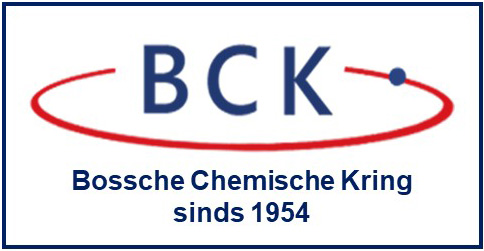Chemie door middel van Quantumdesign
Avondlezing door prof.dr. Matthias Bickelhaupt, georganiseerd door de Bossche Chemische Kring.
Samenvatting
Despite several decades of pioneering activities in quantum chemistry, still many of the corner stones of chemical theory are based on empirical rules. They serve to bring order into the vast body of experimental, and computational, observations. But often they are wrong, leading to conflicting, or just incorrect, predictions.
I will address three topical examples that we have recently investigated: The first one concerns the well-known phenomenon of the contraction and strengthening of C–H and other bonds as the carbon atom involved varies, in s–p hybridization, along sp3 to sp2 to sp, e.g., the C–H bond in ethane, ethene, and ethyne [1]. Based on quantitative MO theory and the Activation Strain Model (ASM) [2], I will show that this well-known trend is not, as taught in textbooks [3], determined by an increasing amount of s-character at the carbon atom in these bonds. Instead, a completely different physical mechanism is at play that has to do with sterics.
A second example of a recent paradigm shift is related to the observation that chemical bonds, in general, become weaker as the electronegativity difference across the bond decreases [4]. The traditional MO picture behind this trend is that the electron of the higher-energy singly-occupied molecular orbital (SOMO, e.g., on a methyl radical) is stabilized less if it drops less in energy into the bonding combination with the lower-energy SOMO (e.g., the p AO on a halogen atom), if that latter SOMO goes up in energy (e.g., from C–F to C–I bond).
For the first time, the actual bonding mechanism in representative series of bonds has been fully elucidated using quantitative MO theory. Strikingly, our findings reveal how, and why, the above electronegativity model for the strength of polar bonds breaks down for specific series (e.g., C–F to C–I), whereas it does hold for others (e.g., C–C to C–F). Ironically, the series of carbon–halogen bonds, for which the electronegativity model breaks down, serves in major textbooks to illustrate the correctness of the (in that case incorrect!) model [3].
The third example is about how methyl substituents affect the stability of alkyl radicals MemH3-mC• and the corresponding MemH3-mC–H bonds (m = 0 – 3) [5]. The state-of-the-art in physical organic chemistry is that alkyl radicals are stabilized upon an increase in their degree of substitution from methyl < primary < secondary < tertiary. I will provide evidence that falsifies this model and show that, on the contrary, the MemH3-mC• radical is destabilized with increasing substitution. And I will explain how this is still in agreement with the concommitent decrease in C–H bond strength along this series.
If time permits, I will round off with a novel insight on the question of whether a cycloaddition reaction proceeds concerted synchronous or asynchronous [6].
References
[1] P. Vermeeren, W.-J. van Zeist, T. A. Hamlin, C. Fonseca Guerra, F. M. Bickelhaupt, Chem. Eur. J. 2021, 27, 7074.
[2] P. Vermeeren, S. C. C. van der Lubbe, C. Fonseca Guerra, F. M. Bickelhaupt, T. A. Hamlin, Nature Protoc. 2020, 15, 649-667.
[3] See, for example, the authoritative POC textbook: E. V. Anslyn, D. A. Dougherty, Modern Physical Organic Chemistry, University Science Books, Mill Valley, CA, 2006.
[4] E. Blokker, X. Sun, J. Poater, J. M. van der Schuur, T. A. Hamlin, F. M. Bickelhaupt, Chem. Eur. J. 2021, 27, 15616.
[5] E. Blokker, W.-J. van Zeist, X. Sun, J. Poater, J. M. van der Schuur, T. A. Hamlin, F. M. Bickelhaupt, Angew. Chem. Int. Ed. 2022, 61, e202207477/1-6.
[6] P. Vermeeren, T. A. Hamlin, I. Fernandez, F. M. Bickelhaupt, Chem. Sci. 2020, 11, 8105.
CV Matthias Bickelhaupt holds Chairs in Theoretical Chemistry at Vrije Universiteit (VU) Amsterdam and Radboud University, Nijmegen, and is Head of the VU Department of Chemistry & Pharmaceutical Sciences.
Matthias Bickelhaupt holds Chairs in Theoretical Chemistry at Vrije Universiteit (VU) Amsterdam and Radboud University, Nijmegen, and is Head of the VU Department of Chemistry & Pharmaceutical Sciences.
After obtaining his Ph.D. with N. M. M. Nibbering and E. J. Baerends in 1993, he worked with P. v. R. Schleyer, T. Ziegler and R. Hoffmann, became assistant professor in Marburg in 1997, and got tenure at VU Amsterdam in 1999.
He is winner of the Dutch Research Council’s VICI award, member of the Royal Holland Society for Sciences and Humanities (KHMW), Fellow of the Royal Society of Chemistry (FRSC), and Chemistry Europe Fellow.
His research interests include developing the analysis and theory of chemical bonding and reactivity, with applications in organic, inorganic, and biological chemistry.
Introducé(e)s zijn van harte welkom.
Graag vooraf bericht als u verwacht te komen.
Stuur daartoe een mail naar secretaris@beceka.info.
Meer informatie over deze en andere lezingen is te vinden op www.b-c-k.nl.

